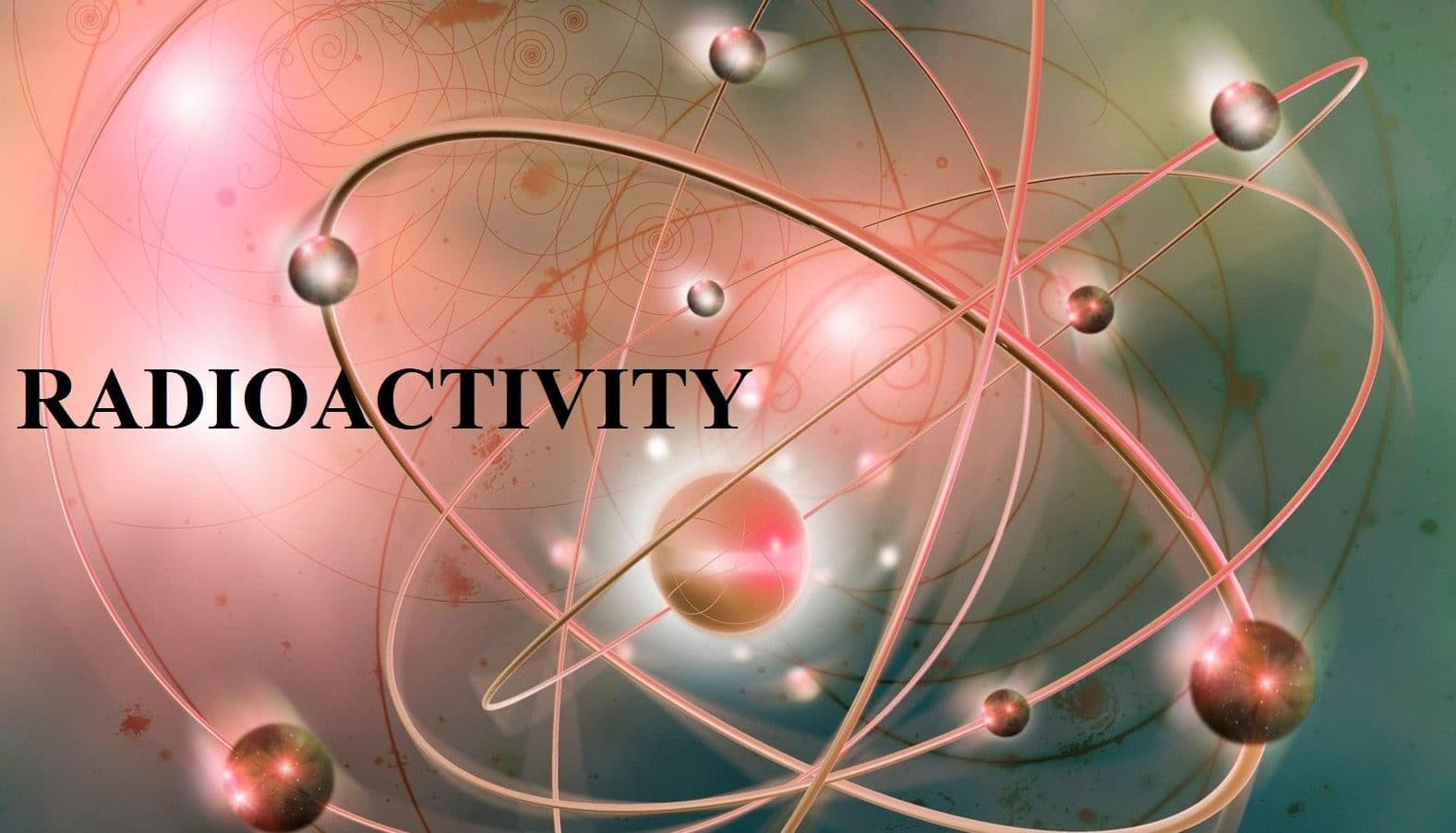STD X – MODERN PHYSICS – RADIOACTIVITY – EINSTEIN
About Course
In this section we will Learn the following Lessons
1. Atomic Structure and Radioactivity
2. Alpha, Beta and Gamma Particles and their properties
3. Application of Radioactivity
Last Updated:November 4, 2023
0 (0 Ratings)
Share Course
Page Link
Share on social media

Description
Atomic structure:
Everything in the world is made up of atoms. The structure of the atom is what gives an element its chemical and physical properties.
Atoms are made up of three smaller particles:
Electrons
Protons.
Neutrons.
Radioactivity:
Radioactivity refers to the particles which are emitted from nuclei as a result of nuclear instability. The most common forms of radiation emitted have been traditionally classified as alpha, beta, and gamma radiation.
An atom consists of a nucleus at its centre, surrounded by electrons which are revolving in some specific stationary shells (or orbits).Electrons in different shells have different energy values. The maximum number of electrons in a shell of number n is given as 2n2.
The electron has a negative charge equal to – 1.6 x 10-19 C (or – e).
Its mass is 9.1 x 10-31 kg.
What I will learn?
- Radioisotopes have found extensive use in diagnosis and therapy
- Foremost among industrial applications is power generation based on the release of the fission energy of uranium
- Research in the Earth sciences has benefited greatly from the use of radiometric-dating techniques
- Radioisotopic tracers are employed in environmental studies, as, for instance, those of water pollution in rivers
Free
Free
Free access this course
-
LevelIntermediate
-
Total Enrolled6
-
Duration3 hours 30 minutes
-
Last UpdatedNovember 4, 2023
Hi, Welcome back!
Material Includes
- 🔥 Live Interactive classes with in-class doubt solving
- ⭐ Weekly Test and Quiz with instant tracking for progress
- ⚙️ Revision of the course after testing
- 👋 Fortnightly Parents and Tutor interactions
- 🌷 Expert monitoring of student's learning progress
- 👨👩👧👧 Daily communication over call, whatsapp and mail
- 💻3 hours on-demand video
- ✍4 downloadable resources
- ⌛Access for entire Academic Year
- 📱Access on mobile and Desktop
- 📋Assignments and review of the same
- 💡Tests and Correction by Board paper checkers
- 🏅Certificate of completion and Live tracking with Gradebook
Course Duration:
3h 30m
Course level:Intermediate
Enrolled:6
About Course
In this section we will Learn the following Lessons
1. Atomic Structure and Radioactivity
2. Alpha, Beta and Gamma Particles and their properties
3. Application of Radioactivity
What I will learn?
- Radioisotopes have found extensive use in diagnosis and therapy
- Foremost among industrial applications is power generation based on the release of the fission energy of uranium
- Research in the Earth sciences has benefited greatly from the use of radiometric-dating techniques
- Radioisotopic tracers are employed in environmental studies, as, for instance, those of water pollution in rivers
Course Curriculum
RADIOACTIVITY – 04 MAY – ATOMIC STRUCTURE AND RADIOACTIVITY
Atomic structure and nucleus
Isotopes
Atomic number and Mass number
Radioactive emissions
Equation involving alpha, beta decay
Background radiation.
Radiation: X-rays; radioactive fallout from
nuclear plants and other sources.
Nuclear Energy: working on safe disposal of
waste. Safety measures to be strictly
reinforced.
-
RADIOACTIVITY – PHYSICAL CLASS – SUBATOMIC PARTICLES AND ISOTOPES, ISOBARS AND ISOTONES
18:08 -
CONCEPT OF RADIOACTIVITY – CORE CONCEPT – WHAT ARE ISOTOPES?
03:16 -
CONCEPT OF RADIOACTIVITY – CORE CONCEPT – ISOTOPES
17:03 -
CONCEPT OF RADIOACTIVITY – SUPPORT MATERIAL – ISOTOPES
00:53 -
CONCEPT OF RADIOACTIVITY – CORE CONCEPT – ISOTONES
05:17 -
CONCEPT OF RADIOACTIVITY – CORE CONCEPT – ISOBAR
06:32 -
RADIOACTIVITY – PHYSICAL CLASS – RADIOACTIVE EMISSION
06:06 -
RADIOACTIVITY – PHYSICAL CLASS – ALPHA BETA AND GAMMA PARTICLES
20:05 -
PROPERTIES OD RADIOACTIVE PARTICLES – CORE CONCEPT – EMISSION OF ALPHA , BETA AND GAMMA RAYS
08:16 -
RADIOACTIVITY – PHYSICAL CLASS – NUCLEAR FUSION AND NUCLEAR FISSION
09:07 -
CONCEPT OF RADIOACTIVITY – CORE CONCEPT – RADIOACTIVITY
13:08 -
PROPERTIES OD RADIOACTIVE PARTICLES – CORE CONCEPT – PROPERTIES OF ALPHA RAYS
08:49 -
PROPERTIES OD RADIOACTIVE PARTICLES – CORE CONCEPT – PROPERTIES OF BETA RAYS
06:38 -
PROPERTIES OD RADIOACTIVE PARTICLES – CORE CONCEPT – PROPERTIES OF GAMMA RAYS
08:00 -
CONCEPT OF RADIOACTIVITY – CORE CONCEPT – ATOMIC NUMBER AND MASS NUMBER
08:05 -
ATOMIC STRUCTURE AND RADIOACTIVITY – CORE CONCEPT – ATOMIC NUMBER AND MASS NUMBER
08:05 -
CONCEPT OF RADIOACTIVITY – SUPPORT MATERIAL – WHAT IS RADIOACTIVITY
00:49 -
ATOMIC STRUCTURE AND RADIOACTIVITY – SUPPORT MATERIAL – ATOMIC STRUCTURE
06:00
PROPERTIES OD RADIOACTIVE PARTICLES
RADIOACTIVE EMISSION
-
RADIOACTIVE EMISSION – CORE CONCEPT – CHANGES WITH IN NUCLEOUS DURING IMITION
12:01 -
RADIOACTIVE EMISSION – CORE CONCEPT – NUCLEAR FISSION AND FUSION
10:21 -
RADIOACTIVE EMISSION – CORE CONCEPT – CONTROLLED AND UNCONTROLLED CHAIN REACTION
06:28 -
RADIOACTIVE EMISSION – CORE CONCEPT – NUCLEAR FISSION
08:22
RADIOACTIVITY – ONLINE CLASS – 25 OCT 2023
-
RADIOACTIVITY – ONLINE CLASS – RADIOACTIVE PROPERTIES OF ALPHA BETA GAMMA AND NUCLEAR FISSION
57:04 -
RADIOACTIVITY – ONLINE CLASS – NUCLEAR FUSION AND NUCLEAR FISSION
23:33
Student Ratings & Reviews

No Review Yet

